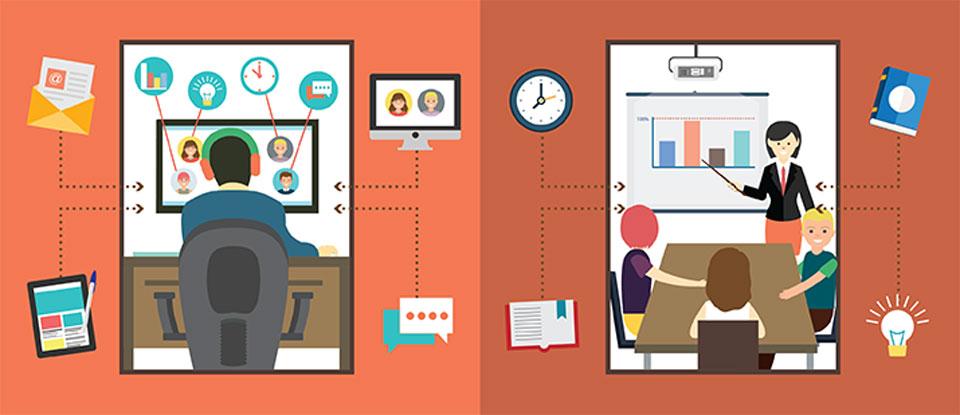Blended Learning: How Traditional and Digital Education unite for Better Results
Introduction: The Future of Learning is Blended
In an ever-evolving educational landscape, blended learning is transforming the way knowledge is delivered and absorbed. By uniting the strengths of traditional classroom instruction and digital education tools, blended learning creates a powerful hybrid model for optimal student outcomes. Whether you’re an educator, student, or parent, understanding how blended learning can enhance engagement and results is essential in today’s world.
What Is Blended Learning?
Blended learning, sometimes referred to as hybrid learning, is an approach that combines face-to-face teaching methods with online educational resources and activities. This model leverages the best of both worlds:
- Traditional Education: In-person lectures, discussions, and hands-on activities.
- Digital Education: Online modules, interactive content, virtual classrooms, and learning management systems.
By seamlessly integrating these modalities, blended learning offers flexibility, personalization, and improved access to resources, making it a top choice for modern education systems.
Key Components of Blended Learning
- Synchronous Learning: Real-time, instructor-led sessions (either onsite or via video conferencing).
- Asynchronous Learning: Self-paced online modules, forums, and assignments completed at the learner’s convenience.
- Personalized Pathways: Opportunities for students to tailor their learning journey based on interests and pacing.
- Technology Integration: Leveraging platforms like Google Classroom, Moodle, and Edmodo for collaboration, feedback, and tracking progress.
- collaborative Projects: Combining individual research with group discussions and peer assessments.
The Benefits of Blended Learning
- Increased Engagement: Interactive digital content helps keep learners motivated and invested in their education.
- Flexible Learning Environment: Students can access resources anytime and anywhere, making education more accessible to diverse learners.
- Personalized Support: Digital tools allow educators to track progress and customize instruction for individual needs.
- Enhanced collaboration: Students learn to communicate and work together using discussion boards, group chats, and shared documents.
- Improved Outcomes: Studies indicate that blended learning boosts comprehension, critical thinking, and long-term retention.
- Planning for the Future: Familiarity with digital tools prepares students for the demands of modern workplaces and remote collaboration.
How Blended Learning Works: A Practical Framework
Implementing blended learning is about finding the right balance between face-to-face teaching and digital tools. Here’s a step-by-step guide for schools, teachers, and parents:
- Set Clear Learning Objectives: Define what students should achieve by the end of each unit or module.
- Choose the Right Technology: Use reliable digital platforms for content delivery and interaction. Popular options include Canvas,Blackboard,and Zoom.
- Design Engaging Activities: Combine live discussions with quizzes, video lessons, and interactive media.
- Monitor and Evaluate: Use data analytics from LMS tools to assess participation and progress.Adjust strategies as needed for better outcomes.
- Foster a Supportive Community: Encourage students to share experiences, ask questions, and collaborate on projects.
Case Studies: Blended Learning in Action
1. Flipped Classroom at a High School
A high school implemented a flipped classroom model, where students watched video lectures at home and participated in discussions and problem-solving during class. The result? A 20% increase in test scores after just one semester, along with improved student confidence.
2. university Blended Learning Pilot
At a major university, introductory courses transitioned to a blended approach with online readings, self-paced quizzes, and in-person labs. Over 85% of students reported greater satisfaction due to flexible scheduling and immediate feedback.
3. corporate Training Success
An international company shifted its professional development to a blended model. Employees completed modules online and attended live workshops to collaborate on projects. Productivity rose, and team dialog improved considerably.
Practical tips for accomplished Blended Learning
- Start Small: Integrate one or two digital elements into your traditional lessons, such as online quizzes or video explanations.
- Provide Ongoing Support: Offer technical tutorials and troubleshooting for both students and teachers.
- Encourage Active Participation: Use tools like forums,polls,and group tasks to keep everyone engaged.
- Solicit Feedback: Regularly ask students what works for them and adjust your approach accordingly.
- Stay Updated: Explore new educational technologies and best practices in blended learning to continuously enhance your courses.
First-hand Experience: A Teacher’s Perspective
“blended learning has transformed my classroom. Students who struggled in the traditional setting are now thriving, thanks to self-paced modules and personalized attention during in-person sessions. The combination of technology and personal interaction keeps lessons fresh and accessible for everyone.”
— Ms. L. Johnson, Middle School Science Teacher
Challenges and solutions in Blended Learning
- Access to Technology: Ensure all students have devices and reliable internet. Consider funding programs and loaner devices.
- Digital Literacy: Provide training for students and teachers to build confidence with new tools.
- maintaining Engagement: Mix up digital and offline activities to prevent screen fatigue.
- consistent Communication: Set clear expectations and maintain open lines between all stakeholders—teachers, students, and parents.
Conclusion: Blended Learning as the Gold Standard
Blended learning isn’t just a trend; it’s a proven strategy for maximizing the strengths of both traditional and digital education.By fostering engagement,flexibility,and deeper understanding,blended learning prepares students for success in the classroom and beyond. Whether in K-12, higher education, or corporate training, blending face-to-face interaction with innovative digital tools propels learners toward their fullest potential. Embrace blended learning—and unlock a future of limitless educational possibilities.

